There can be your advertisement
300x150
Kitchen Design Retrospective: The 1950s
We tell you about revolutionary discoveries in kitchen design in the middle of the 20th century and explain why this era is called the generation of housewives
Together with the Gorenje brand, we are launching a series of articles in which we will tell you how the kitchen has changed from the middle of the 20th century to today, and hint at what to expect from future kitchens.
Our first article is dedicated to the 1950s. We explain what kitchens were like at the height of the iconic mid-century modern era.
What do we know about this time? The design trend is dictated by the United States. Post-war industry develops at accelerated pace. Goods become mass-accessible and beautiful, partly due to the emigration of European designers and artists to the U.S. Gender equality takes a back seat, and women begin dedicating all their time to family, home, and, of course, cooking. Therefore, the 1950s are called the generation of housewives. Fashionable household appliances, kitchen furniture, and dishes become cult items thanks to advertising, which quickly gains momentum.
Designers create furniture and lighting that later become true classics. Among the most iconic are Arne Jacobsen's Ant Chair, Werner Panton's Panton Chair, Eero Saarinen's Tulip Table, and others. The era of space exploration also reflected in design. Gradually, futuristic appliances, neon lighting, and items resembling flying saucers and spacecraft parts enter the mainstream.
Empty factories, warehouses, and workshops begin to be rented cheaply by artists and New York bohemians. Industrial style and loft begin to take shape.
Kitchens of the 1950s: Key Features
The 1950s completely transformed the perception of functional and aesthetic kitchens. From that point on, kitchen spaces stopped being auxiliary rooms with bulky and inconvenient furniture and a cooking process consisting of unnecessary movements and steps. What replaced the old-style kitchens?
via GIPHY
Innovations
Housewives gradually adapt to dishwasher machines, toasters, blenders, and other 'smart' helpers by today's standards.
Along with kitchen appliances, food itself changes. For example, the appearance of semi-finished products was supported by the development of refrigerators with powerful freezers.
 Design: GORENJE
Design: GORENJECompact Furniture and Modern Appliances
Clumsy huts and wardrobes are now considered relics of the past. The trend is compactness. A typical layout has an L-shape. Kitchens for the first time become modular, and appliances begin to be integrated into furniture.

Kitchen Combined with Dining Room
Differently from the 1940s kitchens, where only cooking took place, and dining was done in the living room or dining hall, in the 1950s kitchens began to feature eating corners, like in cafes.
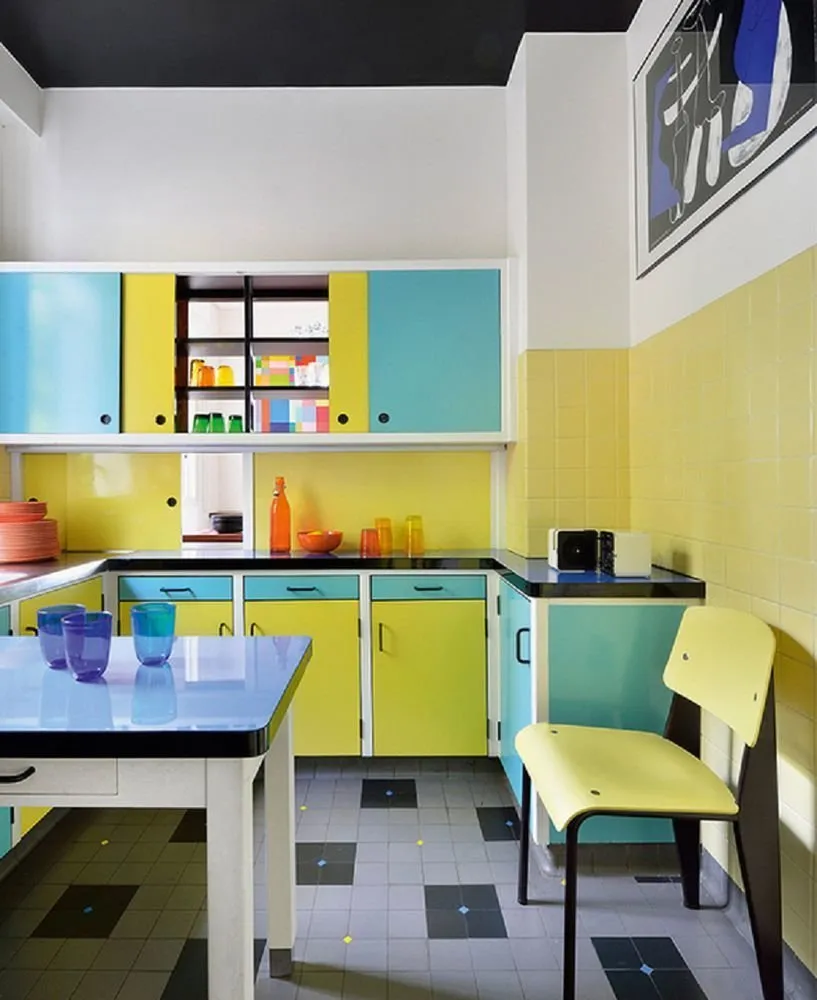
Moreover, the main idea is again rational use of square meters: who needs a bulky dining table if everyone fits easily around a small one?
via GIPHY
Only Not Wood
Although it is still present in furniture finishes, wood is increasingly being replaced by other, more 'advanced' materials—stainless steel, anodized aluminum, plastic, and rubber.
They have many advantages: more hygienic, durable, and most importantly, accessible and democratic, these materials meet modern requirements for kitchens of the new generation.
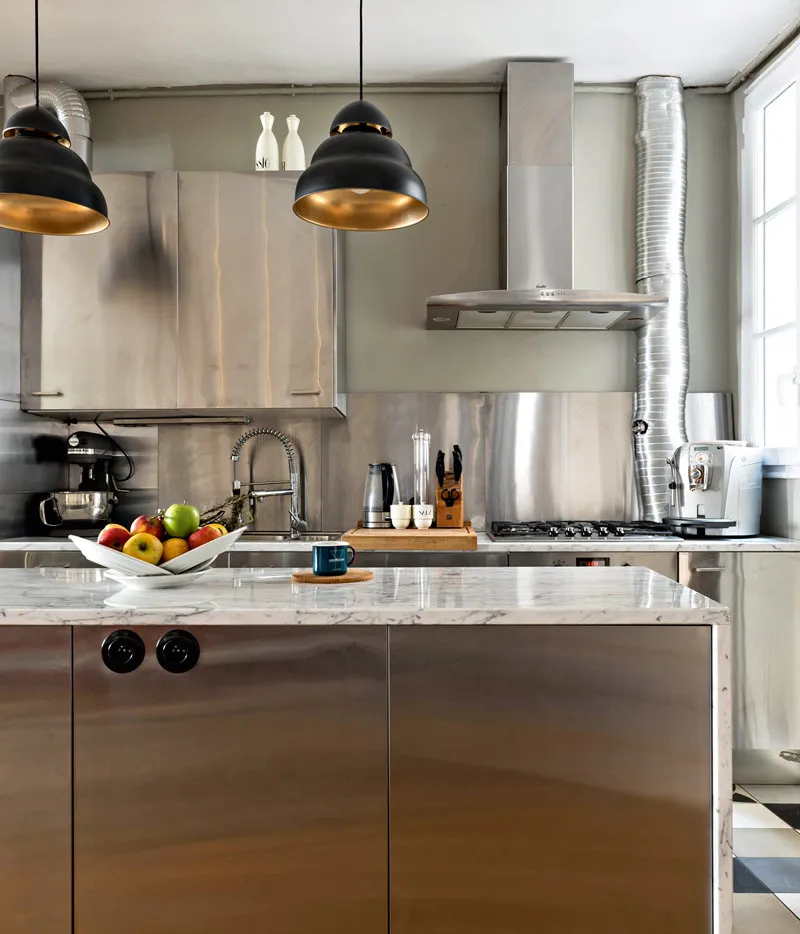
Color
Despite the fact that mid-century modern is generally characterized by muted, 'expensive' wood tones, as well as ochre, milk, and wine shades, kitchens are vibrant and colorful.
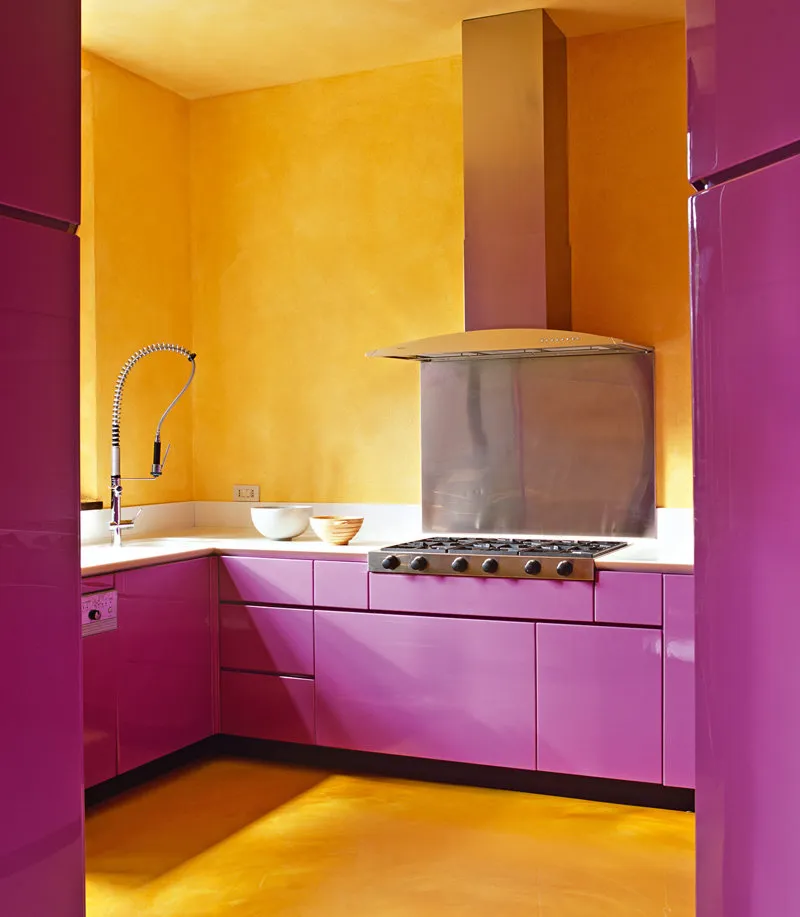
To 'capture' the palette of this period, one should pay attention to American diner interiors. The typical design of these popular U.S. food establishments was formed precisely in the 1950s and seems to have 'frozen' in this time forever.
Vibrant, saturated colors, rounded forms, neon signs, and a lot of recognizable clichés like retro vending machines with characteristic 'cosmic' design—classic diner interiors are a goldmine for everyone who is enchanted by the 1950s and wants to create something similar on their kitchen.
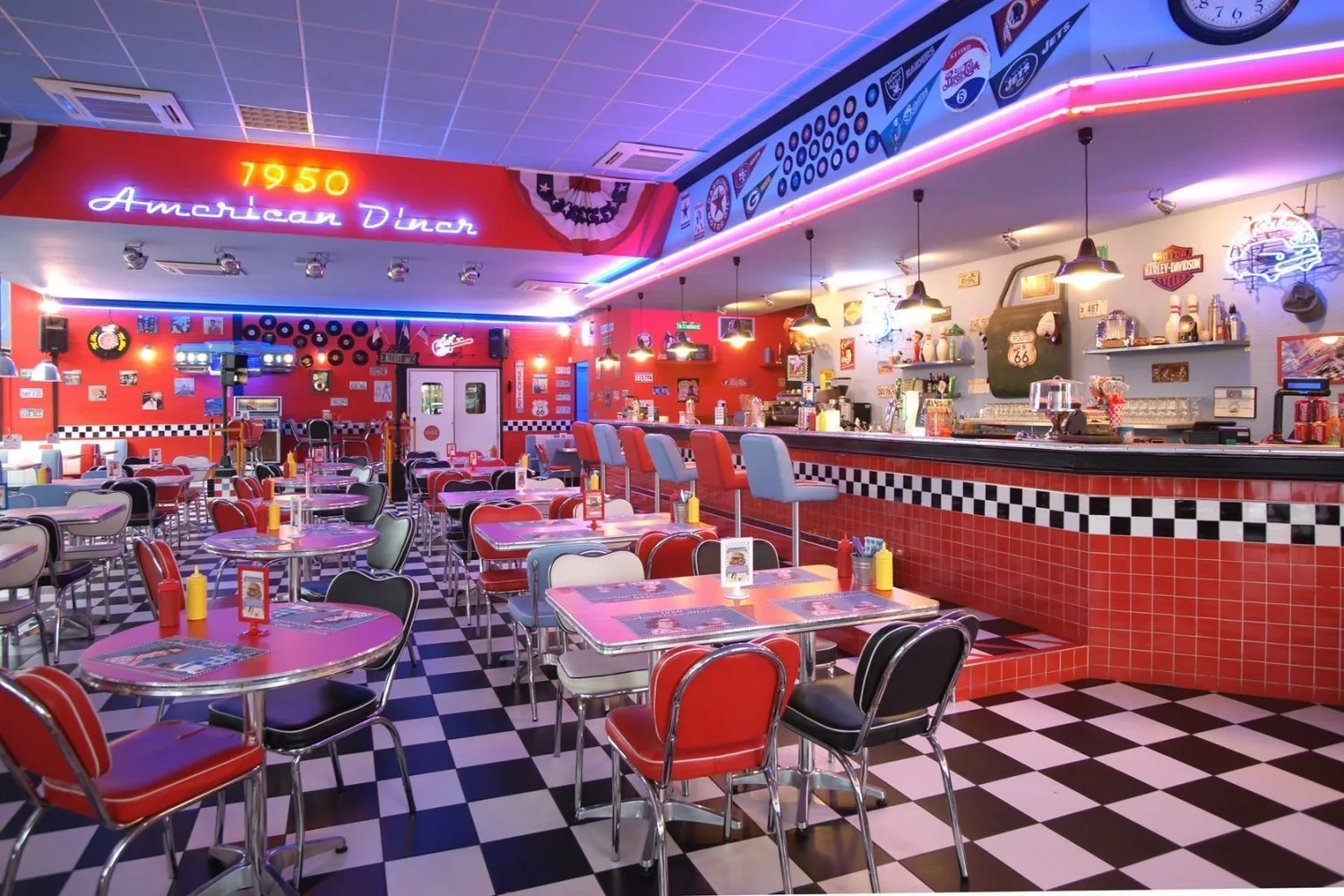
Typical American Diner Interior
Elements of Automobile Design
Not only space exploration: refrigerators, ovens, stoves, and washing machines begin to resemble popular car brands. In the post-war period, the automotive industry also flourished, and we owe the futuristic appearance of 1950s appliances to it.
Soft Forms, Smooth Lines
'Streamlined' design is what makes 1950s items recognizable. Today, kitchen appliances from that era have become retro classics, and interest in them only grows each year.
Modern Kitchen in the Style of the 1950s: What You'll Need?
A dining table for a kitchen styled in the 1950s can be any kind. But the chairs must be iconic! The choice, by the way, is vast: Arne Jacobsen, Hans Wegner, Eero Saarinen, and other designers created many stools that have now become classics precisely in this decade.
With lighting, it's nothing complicated: anything that looks like a mushroom or a spaceship will do.
Cosmic design is relevant for household appliances too. However, functionality must be modern, like that of Gorenje by Karim Rashid's glass-ceramic cooktops. Their arsenal includes touch control, ultra-fast heating, and other 'smart' features. Plus, the bright pink color of symbols on the control panel serves as a retro glow in American diner interiors.
Good range hoods didn't exist in the 1950s. That's a different story now. For example, powerful and quiet Gorenje by Karim Rashid range hoods absorb air during food preparation not only from the center but also around the perimeter, preventing the apartment or house space from smelling of food.
It's not necessary to copy 1950s patterns entirely. It's better to complement kitchen decor with towels, napkins, and coasters featuring modern prints similar to those of that era. A vibrant, slightly naive palette, smooth lines, and ironic themes—exactly what you need.
1950s-style dishes in vibrant shades or muted ones, but always with a minimalist and uncluttered design.
By the way, if you're planning more than just an atmosphere of the era on your kitchen—creating an authentic space—you can try to acquire original tableware with a timeless look that has remained unchanged for decades.
Kitchen appliances, as they should be in the 1950s, must do a lot of things. And even some things that people in those times could only dream about. For example, in the built-in ovens of Gorenje by Karim Rashid, you can cook on four levels simultaneously. Each dish retains its own smell without mixing with others.
A kitchen in the style of the 1950s is a place to cook more often—after all, the generation of housewives, as they say!
More articles:
 5 New Innovations for Bathroom Design
5 New Innovations for Bathroom Design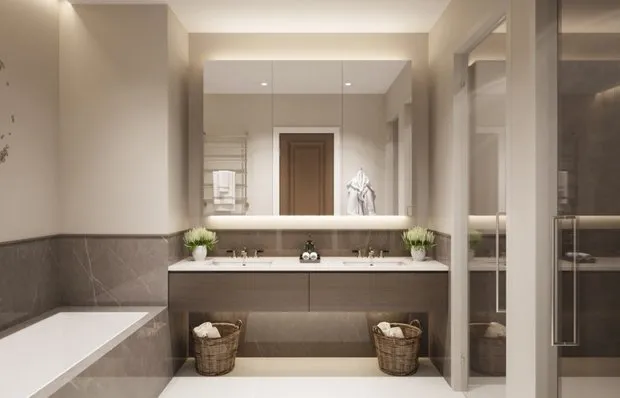 How to Make Lighting in a Bathroom: Tips from Professionals
How to Make Lighting in a Bathroom: Tips from Professionals How to Balance Motherhood and a Designer's Career: 4 Stories
How to Balance Motherhood and a Designer's Career: 4 Stories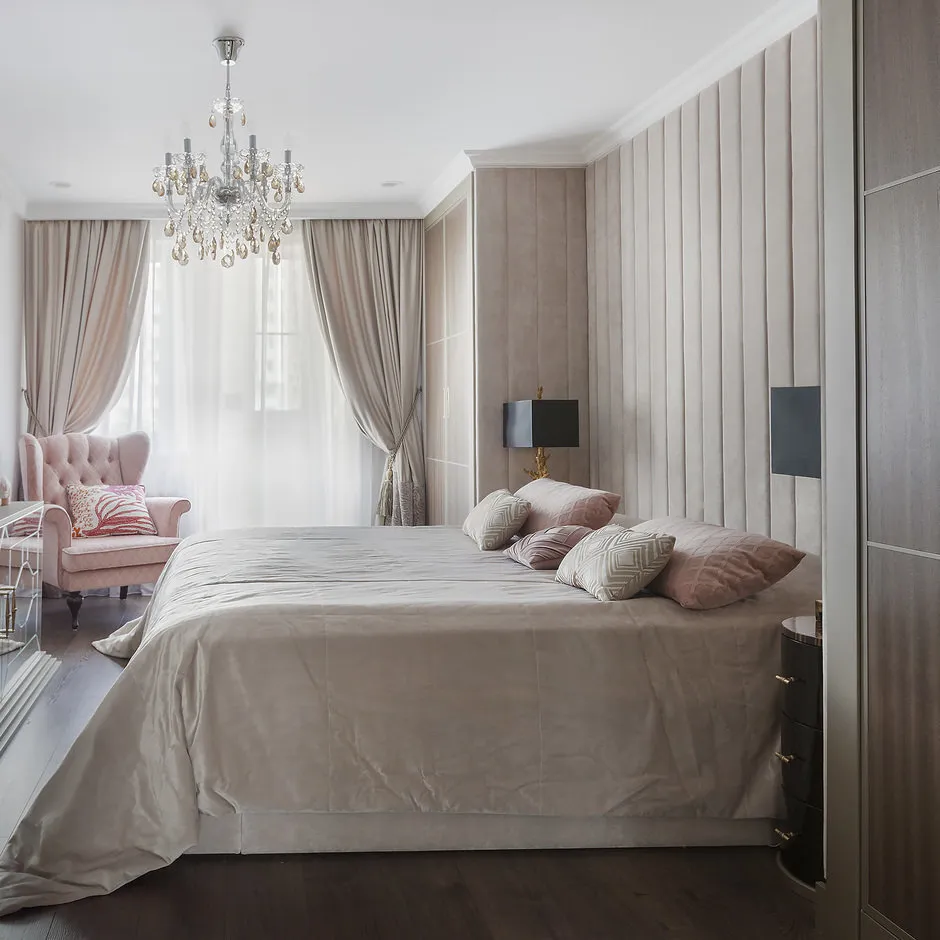 9 Apartments with Functional Walk-in Closets
9 Apartments with Functional Walk-in Closets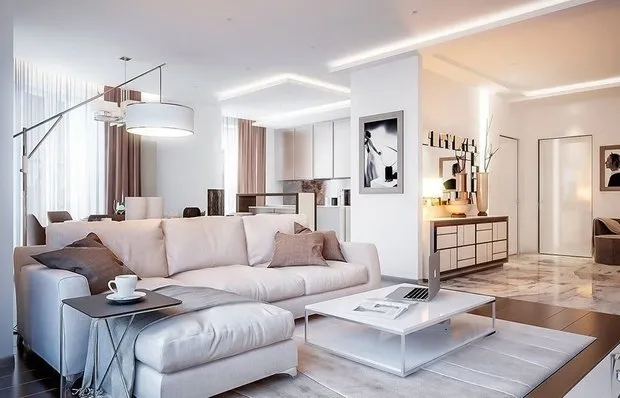 Make a Beige Interior Stylish and Unboring — Is It Really Possible?
Make a Beige Interior Stylish and Unboring — Is It Really Possible?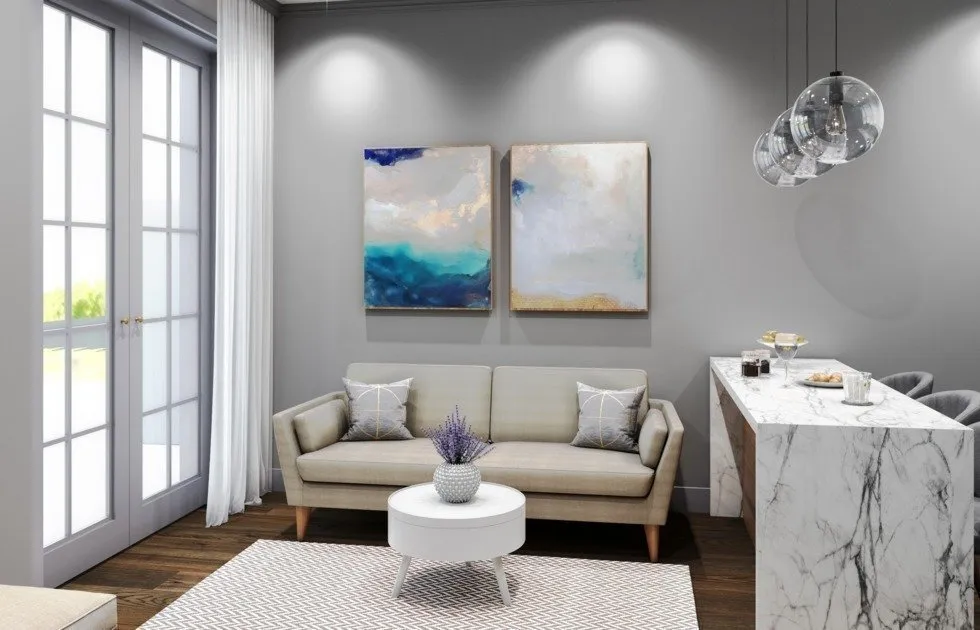 How to Find Space for Everything in a Studio Apartment: 12 Examples
How to Find Space for Everything in a Studio Apartment: 12 Examples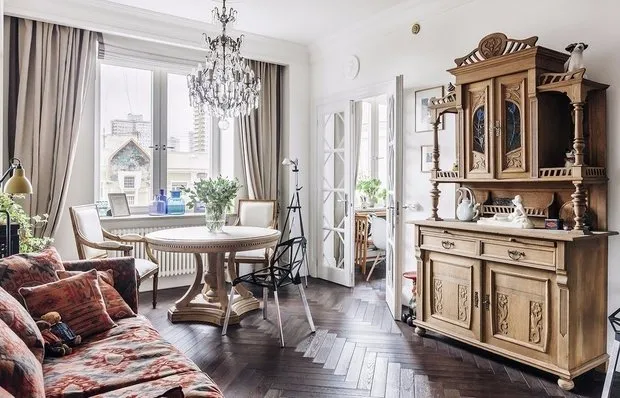 Ideal Interior: 7 Favorite Techniques of Pavel Zhelaznov
Ideal Interior: 7 Favorite Techniques of Pavel Zhelaznov How Designers Decorate Kitchens in Standard Panel Houses
How Designers Decorate Kitchens in Standard Panel Houses